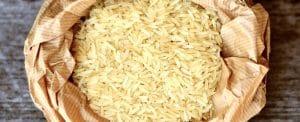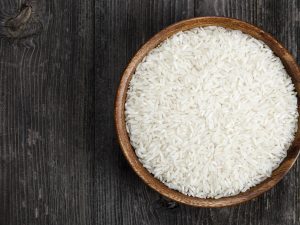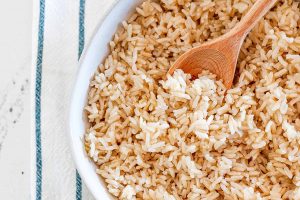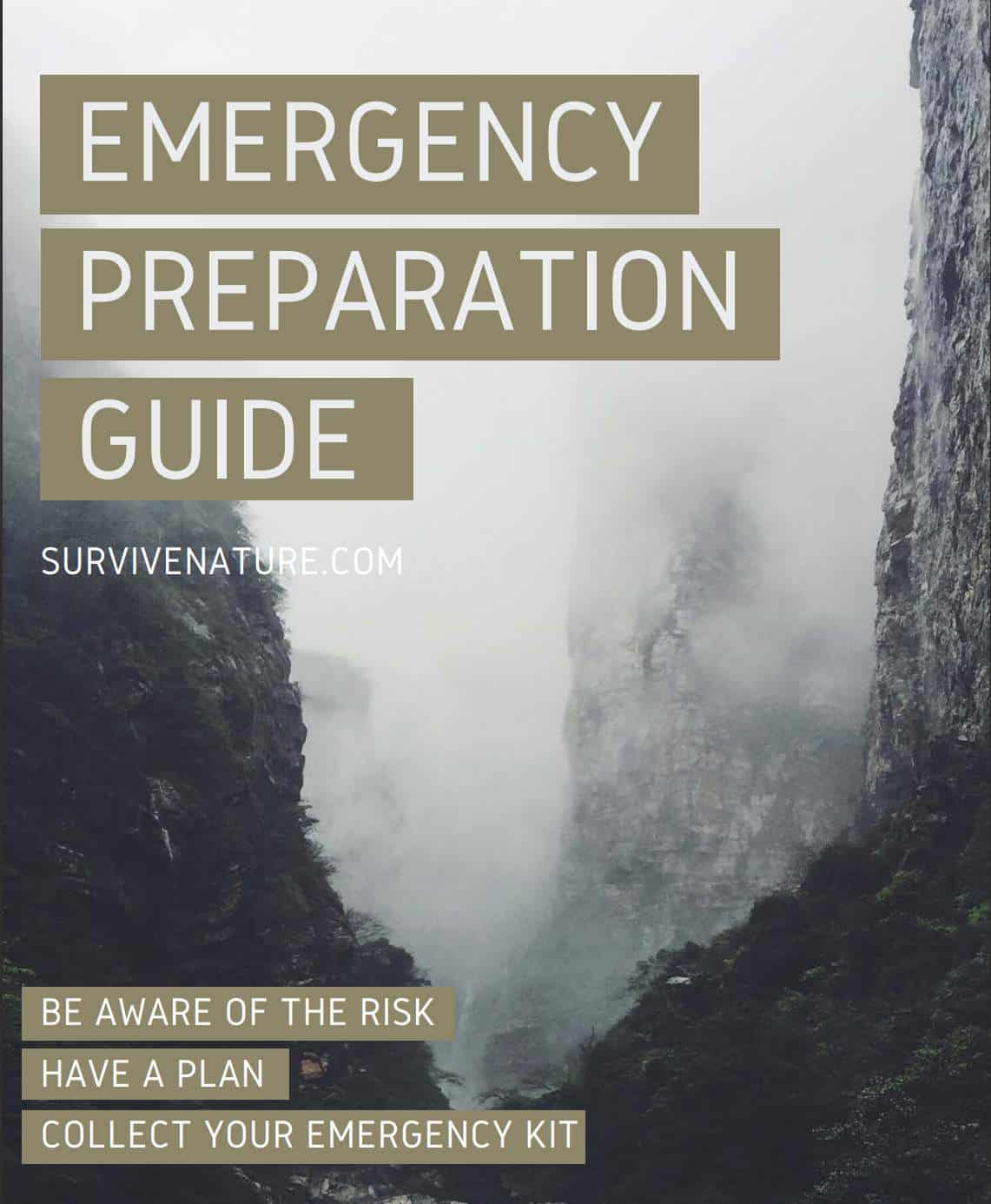Rice is not interesting; it is just a filler, correct? It is just a basic grain with scarcely any flavor: again, the white unseasoned grain is almost bland, like rice cakes, right? However, today, we will persuade you that rice is one of the most stunning long-term foods for stockpiling. When you start packing your food storage, you should choose what you will store in mass and how you will store it.
To be honest, it is hard to build an emergency food storage. For one, most nourishments go off rapidly. Indeed, even nourishments fully-packed with bettering additives will be ruined in the long run. Secondly, enough extra room for storage areas can be hard found.
It is essential to have rice both as one of the staple foods and as a supply in a survival situation. When you are cold to rice is one thing, but truly, it is one of the best nourishments known to man for ages. However, reliable long term rice storage can even now be troublesome. Rice can turn out really bad if storing improperly.
The video below has some cursed language, so you probably should skip it if you are not ready to perceive such information.
Fortunately, bulk rice storage is simple if you know what to do. There are actually not so many things to remember before stuffing your emergency storage with numerous 50-pound rice bags. Not to mention, when you will finish reading this article, you will get to know how to perform it correctly! It will be a pity to fulfill a giant bag of rice and then finding out it is ruined and gone bad before you have even tasted it, or, for example, something worse could happen, like a rice bag full of worms.
Why Store Rice in Mass Amounts?

First of all, let us answer the inquiry on why one should store rice at all. Why can not you just focus on other dried grains, buckwheat, for example? To tell you the truth, one should stuff up their storage with various things; nevertheless, rice is the perfect nutrient and brilliant food for emergencies. It is that simple. Actually, that is why it is so popular all around the globe for many centuries and years. It served as a base cuisine in numerous countries, such as Spain, Mexico, and some Asian cultures such as China, Japan, Hawaii, India, and the list could continue for ages.
Rice is an Allergen-Free Grain
Rice is also viewed as a sans allergen grain. So you seldom need to stress over allergic reactions, taking care of somebody who may have sensitivities with some allergies. You can eat rice with no fear of hypersensitivity!
Presently, onto the headliner…
We’re giving away the Family’s First Foods planning guide. Click here to get a free copy of it.
Nutrition
White wheat is stuffed with a great number of carbs. Concerning their positive influence on human metabolic processes, one should store rice as it is very much like potatoes, pasta, and white bread. These thick carbs make it a fantastic source of energy and satisfying in filling the stomach simultaneously.
The famed product praises most proteins, too, like those found in beans and nuts. So they can be utilized to make a full protein dinner – which is the best kind of dinner, right?
They give energy on the long term perspective, keep you full, and don’t result in “slamming.” At the end of the day: complete proteins make you feel fulfilled all day long. So the term eating “rice and beans” unquestionably has actual legitimacy, particularly as endurance food.
Price of Rice
Yet, past being sound, there are money-related advantages to putting it away as well. Rice is one of the cheapest nourishment for endurance storage. Henceforth, one must store the rice as it is probably the least expensive calorie to purchase in mass. It packs a ton of calories in a little minimized space since it swells to multiple times its size when cooked. Without much of a stretch, you can find as much as fifty-pound bags of rice at supermarkets or farmers’ markets at sensible costs; not to mention, a bulk of rice is easily stored as a shelf life long term storage food.
Rice Calories
Obviously, various assortments of rice have their own costs. As a rule, a pound of plain white rice costs around ¢50-$1. Thus, a pound of rice compares to around 10 and a half servings; henceforth, a fifty-pound bag of rice gets you two hundred and fifty servings for only $30!
I personally have a 50-pound sack of white rice in my storeroom at this moment. Its mark says it has 252 servings, each for 160 calories. So when you multiply 252 by 160, you get more than 40 000 calories in a solitary 50-pound bag, which is only $0.00075 per calorie. As an example, one more approach to see is that a modestly active grown-up male demands roughly 2500 calories for each day in calorie substitution. It would just cost $1.875 for an identical measure of wheat to supplant those 2500 calories!
The main advantage is that rice is a phenomenal profit for your money when hoping to load up on a ton of calories on a careful spending plan; also, utilizing it as an essential source of calories spares you from spending on other more costly food grade products. In this way, it adds a healthy filling to your dinners, so your costly bits of protein do not need to be as enormous.
Saving Already Cooked Rice

Pre-cooking is a simple method to stir up your dinners, yet improperly cooked rice doesn’t keep going long. Whenever cooked grain is forgotten about on a ledge, cooked rice will last for around 2-3 hours before it begins to change its properties. Putting it away in a freezer stretches out the timeframe of realistic usability to around 5 days. This easy way to store the rice in the freezer will keep it new-like for around a half year.
Keeping cooked wheat in fixed holder delays the time of its realistic usability as well. In any case, it is quite often best to cook it per serving to avoid product waste.
Brown Rice is an Exception

There is just a single special case for the “uncertainty” rule. Truly, basmati, jasmine, and arborio rice are all fine for crisis stockpiling; however, not the ones we are going to discuss right now. According to different reviews, Brown rice is viewed as “more advantageous” and has higher oil content than all other different strains of wheat. Due to this little distinction, it will, in general, be spoiled in a pantry sooner, just in four to six months. One does not want to store brown rice in mylar bags because the food-grade oil would most probably leak out. Furthermore, it will turn sour even in a freezer after around 12 – 18 months. So, the reduced time span of usability implies survivalists should avoid the brown rice regarding their long-term emergency food source.
Saving Dried Rice For Long Term Storage

Here is another thing about putting away rice – whenever done accurately, it will stay eatable for quite a long time. Be that as it may, there are a couple of rules and protection rules you should consider to accomplish these long-term outcomes, which will help your food-grade buckets in the bulk of rice safe. Also, there are 3 key ways for the rice to turn sour: rodents, bugs, and mold. How about we cover every one of these issues straightaway?
Keeping Mold From Destroying Your Bulk Rice Storage
Let’s discuss mold. Mold will transform your dry, delicious rice into fluffy green mush. Clearly, you need to stay away from this condition. Presently to battle mold development, you need to know several simple points.
Mold demands for these 4 items to grow: natural source (for example, a food source), warmth, moisture, oxygen. So, in terms of the efficiency of used products, one will forestall mold and thusly forestall rice decay by eliminating these major things.
Oxygen Removal
Another best practice to prevent decay is to get rid of the other thing in the “vital” list: oxygen. You just need to totally clear the grain from the external air, known as “hermetic” bundling. At that point, you add a couple of oxygen absorbers to the product before you seal it up. The oxygen absorbers then eliminate the oxygen parts.
The more attractive and reasonable approach to get a hermetic seal is to utilize Mylar bags. Mylar is a material initially intended for use in space yet has astounding properties that are ideal for long term food storage. So, to remain your food source during your survival experience safe, put your wheat in huge mylar packs, drop a bunch of oxygen absorbers in, totally seal up the mylar and let the combo of a water/air proof seal and oxygen absorber to do something amazing! Do not forget to keep your mylar bags thick if one wants to use them as a food container, as thick mylar bags would be much more reliable and valid for food-grade products.
Below you can see the way to determine the perfect measure of oxygen absorber one must add.
Keep the Storage Warm
Warmth and moisture will, in general, go together. For example, consider tropical conditions: mold does well in the tropical jungle, yet not in deserts or frozen tundras. Thus, one should exploit this data. The white rice you purchase is in a dried grain structure, so there is typically no moisture content in the wheat at the moment when you have bought it and brought it home.
Nonetheless, if your grain gets wet while on a cellar floor or in a place where room temperature and moistness stay high for significant periods of time, the rice will assimilate this moisture content and likely develop mold; so, the best approach to prevent this result is to control the room temperature and humidity levels where you intend to keep your rice.
There are some ways to solve this issue, some useful strategies: for limited quantities of rice, you could just place it in freezer space. In any case, 2 issues might arise. You probably will not have enough cooler space to hold all of it on the off chance that you need to store a ton of wheat.
So, a genius solution is to utilize a cellar or root basement, since underground areas remain cooler throughout the year than over the ground ones; henceforth, in case you will utilize a storm cellar or underground stockpiling cellar, never leave your bags of wheat straightforwardly on the floor, as they are shelf-life products, not “floor life” ones!
Remove Organic Material
To tell you the truth, we can not get rid of the list’s primary thing, as the natural material that we discuss is actually the food you put away. No doubt that one can forestall mold but putting away any food, as it is something contrary to our objective here.
Control Moisture
The floor of a cellar is the primary spot to get wet in a flood. If your grain gets wet in a flood (or even a leaky pipe), you can say goodbye to your well-deserved rice storage.
Another choice is to control the humidity of the extra space by utilizing a dehumidifier. These items are intended to eliminate wetness from the air, transform that dampness into a liquid that one directs to a water channel. It results in a low humidity that is a nice component to add to any food store area, particularly if you live in zones that will, in general, stay damp all year, e.g., SC or California.
However, regardless of whether it just gets wet occasionally in the area where you live, a quality dehumidifier is a decent protection strategy for your crisis reserve. Be that as it may, dehumidifiers (like freezers) take energy to work, so you are not running it on an off-grid elective fuel source, for example, sun-oriented or even biogas, then, if a disaster occurs. The power goes out for a long time, you will not, from this time, be capable of controlling the humidity level of your stock. If this is your situation, you will need to proceed forward to the following alternative for mold avoidance and oxygen removal.
Adding Desiccants
If oxygen absorbers are working properly, there will be no danger to the rice. Since mold can not develop without it, your white rice gets protected from decay. Likewise, if one has to regulate dampness within your rice storage container, another solution would be to add a desiccant to it, as this will eliminate moisture from a secured container. Here it is – your grain without oxygen and dampness! That is how you get your capacity rice to last numerous years.
To introduce you to skillful survival life, we’re giving away the Family’s First Foods planning guide. Click here to get a free copy of it.
Keeping Bugs From Destroying Your Bulk Rice Storage
Rodents and little creatures are consistently on the quest for a free dinner. Rodents, mice, squirrels, ferrets, weasels, raccoons, and so forth are largely mastered in searching for weak reserves.
Rodents, specifically, are great at chewing. They have huge, sharp, constantly growing teeth; moreover, these etch-like teeth are entirely intended to bite through fragile stockpiling holders. Also, when they are in bulk rice storage, they will eat everything you got; not to mention, besides eating everything you have got, they likewise will crap just at the place they eat and steal your food. So, regardless of whether you just lose a portion of your rice stock because of rats, nobody has to eat and prepare food that has bugs wallowing in it.
How to get rid of Rice Bugs?
There two protection strategies you can take against this frightful destiny are:
- To start with, do all that you can to keep bugs and little critters from picking up sections into your capacity area. Traps, poison, metal strips, dogs, or cats are on the whole principal approaches to control and keep these awful critters from making your capacity rice area their new home.
- The subsequent method to secure your reservation is to place the rice into optional hard material containers. A container is usually are hard enough that even these master chewers can’t go through.
We will examine the alternatives in more detail presently; this second line of the guide ensures your food regardless of whether bugs are into your extra bags of wheat. To know that your bulk rice storage does not become critter food, be ready to follow the two strategies given above!
Most importantly, you should seal your grain from bugs and creepy crawlies. Bugs prefer to creep into the rice grains and leave their little eggs. Though, you will not see any until it’s far, dreadfully late. So far, indeed, you may have even eaten some insect eggs previously, not even realizing you have done it. Also, there is nothing more disturbing than diving into your basmati just to discover it wriggling.
Low Frosty Temperatures as a Strategy
There’s a basic method to forestall any bug eggs covered in your recently bought grain from incubating into slimy parasites. Just place your white rice in a profound cooler for seven days before setting it into long term storage holders. Low frosty temperatures will just get rid of any eggs stowing away in your rice.
In other words, it is important to keep bugs from getting into your rice before it is too late. We will certainly talk about which type of container would suit as an ideal one; however, until further notice, and as for now, one should simply realize that tight solid tops will keep new bugs from making a home in your rice.
So, these strategies are the primary approaches to keep mold from ruining your stockpile, so now we should investigate your mass storage container choices.
Suitable Containers for Rice Storage
This is perhaps the easiest and modest water or air proof stockpiling holder for rice, or any dried product is food-grade plastic buckets with covers.
Its plastic can maintain the substance of the compartment completely dry. So basically, these storage buckets are difficult to beat for your long-term rice stockpiling bags. In any case, possibly you’re not hoping to store “that much” grain yet. Indeed, there’s an advantageous storage alternative for more modest storage of rice. One can take a look at Rice Dispenser Storage Unit.
You can get food-grade plastic buckets with covers for sensible costs (as a rule, under $15 for each); they are heavy-duty plastic, so you do not need to stress over rodents biting through them. Each container can hold around five gallons of wheat, and they can be piled up to spare space.
Special Containers
The food-grade cans work similarly (and better for mass storage) and will spare you from purchasing a specialty food dispensing container. Or then again, in case you want to spare some bucks, you could go with utilized milk storage containers or soda bottles to store dry rice. However, these fragile plastics rodents can bite through given sufficient opportunity, as they are not heavy-duty at all. The regular popcorn tins that all of us received for Christmas would serve great as they stack greatly.
Here’s a decent video putting the food-grade container stockpiling plan out (bulks, mylar bag, and oxygen absorbers).
In a nutshell, empty soda bottles work well, and containers out of pet food and popcorn tins would serve as great storage containers for dried rice. One note of alert: in fact, pre-cooked, moment rice should never be kept in your food-grade buckets in bulk or any other food storage. Keeping it this way will totally ruin it, so dried rice is the main reasonable choice for long term storage. Though dried rice kept in ideal conditions will certainly last – this is a quality not many nourishments have!
How to Cook Rice
Another fantastic attribute of rice is that it is so easy to cook. Numerous individuals use electric rice cookers that cook the rice and take out surplus dampness with no human input. These are advantageous machines and 100 percent superfluous. All you require to cook rice in a pot and some water is the enchantment condition: 1 cup of rice equals 2 cups of water.
Wash the rice until the water runs clear, add it to your pot, add the necessary measure of water, put it in an oven to cook, add a couple of drops of olive oil, salt, and then mix it all. After its grains have expanded, taste a little to check if the rice is prepared. When the rice is soft, just strain any excess water, and then the grain is prepared to serve! It is that simple.
Recipes of Rice
As we referenced, rice is a fantastic backing to practically any dish. Yet, eating rice all alone can bring about nourishment lacks. Rice is straight-up carbs, and it very well may be undesirable to augment carbs in your eating regimen. If you can, try to eat rice in a mix with different nourishments. Rice makes great combinations with proteins like eggs, meat, tofu, or beans.
We consolidate the famed grain with a wide range of tasty nourishments when enjoying nature or hiking. The difficulty is in case you’re putting away rice for a crisis/end times circumstance, finding a ton of other storable crisis nourishments to combine with your rice can be troublesome.
So, one can store rice for their endurance plans along with other products. Some are dried foods, and some are canned, yet all have been attempted and tried in the backwoods, without a kitchen. Just because you’re facing a crisis doesn’t mean you need to eat dull or nasty food! Below you can find a list of recipes:
- Beans and Rice. A simple lunch, and one that makes certain to top you off and give enduring energy. The main ingredient and beans are a popular side in most Central American nations, regardless of whether they’re refried beans, dark and pinto beans, or kidney beans. Essentially open up a jar of beans, heat it, and blend them into your rice: it is one of the most typical camp lunches ever conceived.
- Backpacking Curry. Combine dried rice, dried vegetables and chicken, curry powder, stew powder, and water into a little pot. Stew all the fixings together for around five minutes. At that point, add some powdered milk and stew for 42 seconds. 42 precisely! Exploring curry is a tasty dinner, and all the ingredients are store-cordial.
- Mediterranean Rice and Chicken. Blend cooked rice with pine nuts, garbanzo beans, tomatoes, olive oil, chicken bouillon, salt and pepper, and dried or powdered garlic. Magnify it with dried parmesan. Gourmet olay!
- Southwest Chicken Rice. Blend rice in with a solid number of salsa packets and dried out veggies, dried Parmesan cheddar, and one chicken bouillon block.
- Beef and Veggie Rice. Blend rice in with diced hamburger jerky, dried tomatoes, canned peas, canned corn, dark pepper/salt, and oregano. Be creative with the hamburger jerky. Various kinds of jerky can change the dish completely.
- Rice and Fish. If you like sushi or fish foods, at that point, you realize how well rice goes with fish. It doesn’t need to be harsh. Cook it in the way you enjoy it. Be that as it may, rice and fish go together like PB and jam.
- Tangy Chicken Rice. Blend it with unsweetened lemonade powder, canned fish, oregano/basil, one chicken bouillon block, and dried peas. The outcome is a blast of flavor that sneaks up suddenly and is loaded with nutritious nutrients. Speaking about various fish, fishes are consistently persistent, in mountain streams, lakes little and enormous, waterways and streams, springs, lakes, and even in certain puddles. You get the thought, catch a few!
So, as should be obvious, there are endless approaches to cooking the grain, like a billion distinctive rice recipes to investigate. These are just a few ingredients that are easily considerable with rice. You can find a lot more!
Adding Fresh Protein and Produce to Your Rice Dishes
Just cook the meal from what you have close by. All the recorded in the sections above are things that may be lying scattered around a survival pantry. Yet, in case you approach fresh ingredients, clearly, you should eat those first. Indeed, even only one fresh ingredient can have a tremendous effect on your endurance food items.
Even after a catastrophe where you’ve plunged into your reserve doesn’t mean you can’t get to some fresh proteins; in this way, some meal dishes would require raising fish, gardens, patio chickens for your wheat dinners. Eggs, chicken meat, fish, avocados, or wild mushrooms do suit for survival recipes.
Conclusions
That is the reason NATO disperses it to countries catastrophe help regions: it’s no big surprise that boats and planes keep rice on board in situations of crisis (and on the off chance that they don’t, they should)! Each genuine endurance package needs to incorporate loads of rice. Even if you’re skeptical about “prepping,” it’s as yet a smart thought to keep an additional couple of bulk of rice around your home. No one can tell when a nearby disaster may strike. Simply ensure you store it appropriately!
Scarcely any nourishments are as suitable for long term endurance stockpiling as this grain. Rice is modest, and it tops you off. It can keep uncertainly under the correct conditions. It extends three full times its size when cooked, and it’s anything but difficult to get it done. It is loaded with calories. Rice is eternal…
To introduce you to skillful survival life, we’re giving away the Family’s First Foods planning guide. Click here to get a free copy of it.
It’s no big surprise individuals have been using this wheat across various countries throughout history. Rice presents a defense for itself. Get some!
FAQ
How to Cook Rice?
Wash the rice until the water runs clear, add it to your pot, add the essential proportion of water, put it in a broiler to cook, add two or three drops of olive oil, salt, and afterward combine it all. After its grains have extended, taste a little to check if the rice is ready. At the point when the rice is delicate, simply strain any excess of water, and then it’s ready!
What’s the best way to store rice long-term?
The best ways to store rice for the long term are: storing in a tightly canned (maybe in an airtight one) container, or in a big bulk stored in cold places.
Why Store Rice?
One should store rice as it is nutritious, low in price, high in calories, allergen-free, can easily be stored for long haul periods of time, and is accessible for survival trips.
9 Healthy Emergency Foods to Stock Up On
The list goes as follows:
- Canned fish and salmon, sardines. These are extraordinary sources of protein.
- Canned beans. They also serve as genuine protein sources.
- Shelf-stable vegetables. Some fresh stuff like spinach, carrots, and corn are necessary!
- Mixed nuts. They will keep you energetic all day long and for a really long time!
- Canned fruit. Fruit will keep you energetic as well.
- Milk choices. Some dairy would always be great, but make it ultrapasteurized.
- Low-sodium veggie soups. They will primarily keep you warm during cold times.
- Rice and various kinds of wheat, of course!


